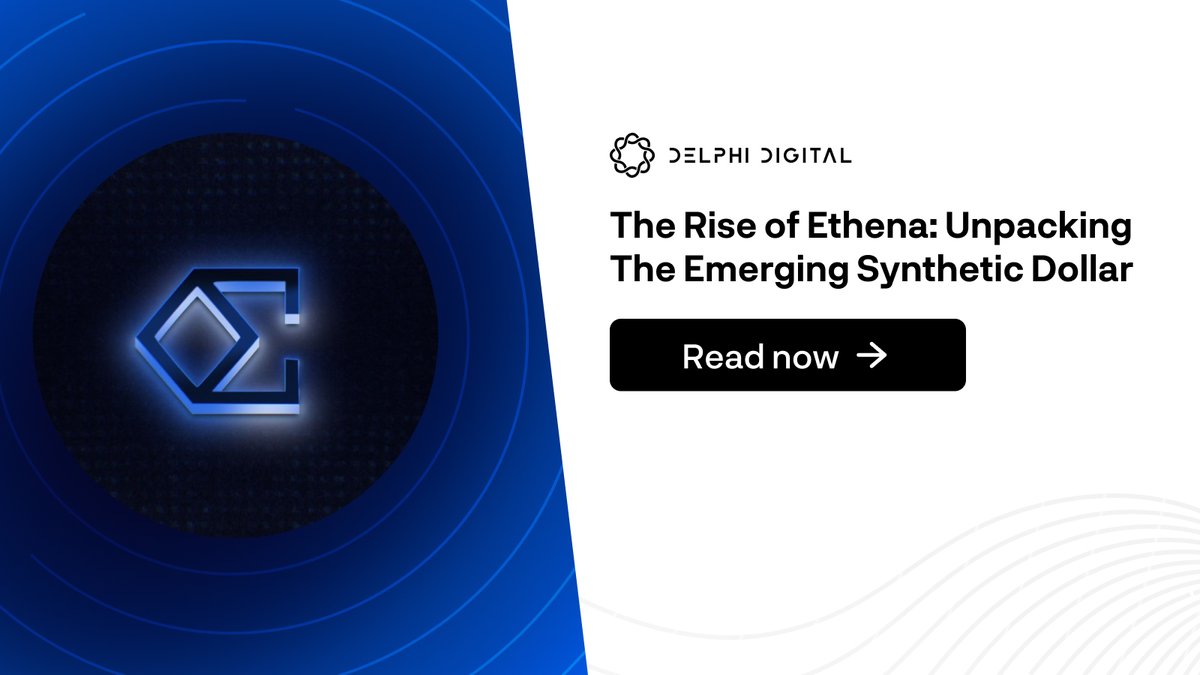Attention Is All You Need
Everyone grasps the importance of attention in their personal lives, but few see how it shapes everything around us.
@mrink0’s unparalleled deep dive explores how attention drives our economy, markets, and minds.
Let’s review key takeaways🧵
Everyone grasps the importance of attention in their personal lives, but few see how it shapes everything around us.
@mrink0’s unparalleled deep dive explores how attention drives our economy, markets, and minds.
Let’s review key takeaways🧵

Make sure you catch the deep dive!
Attention is the most valuable yet misunderstood resource in the world.
The full report dissects the crucial role of the Attention Economy in shaping the landscape of Big Tech, Crypto, and AI ⬇️
delphi.link/attention
Attention is the most valuable yet misunderstood resource in the world.
The full report dissects the crucial role of the Attention Economy in shaping the landscape of Big Tech, Crypto, and AI ⬇️
delphi.link/attention
🔹 Attention Must Flow
Big Tech companies have built the Internet into an attention-warping machine, employing legions of highly paid PhDs to keep users engaged within the digital matrix.
If it were up to them, you would scroll, click, and add-to-cart forever.
Big Tech companies have built the Internet into an attention-warping machine, employing legions of highly paid PhDs to keep users engaged within the digital matrix.
If it were up to them, you would scroll, click, and add-to-cart forever.

Their ultimate creation?
Algorithms that monetize our attention - attention in, profit out.
If you were valuing Big Tech companies like META from first principles, Ad Impressions x Ad Price would be the two fundamental drivers.
Algorithms that monetize our attention - attention in, profit out.
If you were valuing Big Tech companies like META from first principles, Ad Impressions x Ad Price would be the two fundamental drivers.

The game for Big Tech is threefold:
Capture Attention → Retain Attention → Monetize attention.
Remarkably, these three bullets built much of today’s Internet. We get free software; they get our attention. It’s the trade we all strike in the Attention Economy :
Capture Attention → Retain Attention → Monetize attention.
Remarkably, these three bullets built much of today’s Internet. We get free software; they get our attention. It’s the trade we all strike in the Attention Economy :

The real elephant - or “tendie” - in the room is, of course, Gamestonk.
Zeroing in on attention is all you need.
Zeroing in on attention is all you need.
https://x.com/mrink0/status/1790068617809179124
During 2020, @TheRoaringKitty built a cult-like community around $GME.
People joined for various reasons, but the most popular were:
🔹 Short Squeeze: Participants hoped to 'burn the shorts' by inflating the stock.
🔹 Populist Movement: GME was seen as a weapon against 'evil' Wall Street.
🔹 Social Phenomenon: The community's vibes drew many, fostering a sense of belonging to a larger movement.
🔹 Media Hype: Extensive coverage fueled interest and drove Attention
People joined for various reasons, but the most popular were:
🔹 Short Squeeze: Participants hoped to 'burn the shorts' by inflating the stock.
🔹 Populist Movement: GME was seen as a weapon against 'evil' Wall Street.
🔹 Social Phenomenon: The community's vibes drew many, fostering a sense of belonging to a larger movement.
🔹 Media Hype: Extensive coverage fueled interest and drove Attention
In early 2021, the GME hype reached a crescendo. As more investors piled into GME, an insane reflexive loop was created:
retail buys → price up → shorts forced to cover → attention → retail buys → price up
GME apes bought tons of OTM calls, forcing market makers to hedge by buying spot GME. Despite their image, they showed real sophistication.
This loop continued throughout January 2021, culminating in GME soaring from $17 to $347 by month-end → an increase of over 20x.
On the crypto front, Gamestonk was a jarring lesson in centralization.
The GME saga ended when Robinhood removed the buy button, crippling GME's momentum and surge. Crypto solves this.

retail buys → price up → shorts forced to cover → attention → retail buys → price up
GME apes bought tons of OTM calls, forcing market makers to hedge by buying spot GME. Despite their image, they showed real sophistication.
This loop continued throughout January 2021, culminating in GME soaring from $17 to $347 by month-end → an increase of over 20x.
On the crypto front, Gamestonk was a jarring lesson in centralization.
The GME saga ended when Robinhood removed the buy button, crippling GME's momentum and surge. Crypto solves this.


The Key Takeaway: It’s all about attention.
GME did not pump because of the stonk’s fundamentals but because of attention.
What began as a small loyalist group exploded into a viral movement, igniting social media and retail buying frenzy. After the GME mania and the Congressional hearings ended, Mr. Kitty vanished.
Until two days ago, when he reemerged with this tweet 👇
The post immediately blew up and now has over 26 million views in 2 days.
GME did not pump because of the stonk’s fundamentals but because of attention.
What began as a small loyalist group exploded into a viral movement, igniting social media and retail buying frenzy. After the GME mania and the Congressional hearings ended, Mr. Kitty vanished.
Until two days ago, when he reemerged with this tweet 👇
The post immediately blew up and now has over 26 million views in 2 days.
http://x.com/TheRoaringKitty/status/1789807772542067105
Memecoin Supercycle
Attention also plays a key role in crypto. Once dismissed as jokes, memecoins now command serious market attention and dwarf every other sector in terms of price returns. 👇
Attention also plays a key role in crypto. Once dismissed as jokes, memecoins now command serious market attention and dwarf every other sector in terms of price returns. 👇

Memecoins epitomize the concept of "attention is value". They provide a straightforward way to invest in tokens based solely on anticipated future attention without the complexities of product roadmaps or technical milestones.

Crypto democratizes attention by tokenizing it. This lets people own a share of the stuff they pay attention to.
If you spend significant time on [insert your favorite crypto project], you can now own and profit from your attention.
If you spend significant time on [insert your favorite crypto project], you can now own and profit from your attention.
Memecoins take the "attention is value" concept to its logical extreme - offering the purest form of speculation on expected future attention.
No roadmaps or technical milestones.
Memecoins transparently acknowledge their lack of inherent value.
No roadmaps or technical milestones.
Memecoins transparently acknowledge their lack of inherent value.
Many on CT view memes as a revolt against VCs.
Their perception: Insiders fund projects at high FDV and then sell to retail, making many feel disadvantaged.
Retail sees memes as a more democratic approach. The winners are the most viral memes embraced by the culture.
Their perception: Insiders fund projects at high FDV and then sell to retail, making many feel disadvantaged.
Retail sees memes as a more democratic approach. The winners are the most viral memes embraced by the culture.
To reel this in, let’s finish with our beloved orange coin. One of the many things that makes Bitcoin unique is the absence of a singular narrative - instead, there are many:
🔹 Fiat Devaluation
🔹 Excessive Money Printing
🔹 Government Corruption
🔹 Self-sovereignty
🔹 “WW3 is coming”
🔹 “Crypto to the Moon”
Whatever one believes, Bitcoin is a way to express it. This dynamism is what makes Bitcoin powerful and enduring.
It has memes that shape ideas and narratives, influencing what people believe.
Creating a flow of attention as follows:
🔹 Fiat Devaluation
🔹 Excessive Money Printing
🔹 Government Corruption
🔹 Self-sovereignty
🔹 “WW3 is coming”
🔹 “Crypto to the Moon”
Whatever one believes, Bitcoin is a way to express it. This dynamism is what makes Bitcoin powerful and enduring.
It has memes that shape ideas and narratives, influencing what people believe.
Creating a flow of attention as follows:

Curious to learn how AI’s future role may eliminate the Attention Economy?
Our deep dive delves into 3 key dimensions shaped by attention - past, present, and future:
1️⃣ Monetization
2️⃣ Tokenization
3️⃣ AI's role in disintermediating attention
delphi.link/attention
Our deep dive delves into 3 key dimensions shaped by attention - past, present, and future:
1️⃣ Monetization
2️⃣ Tokenization
3️⃣ AI's role in disintermediating attention
delphi.link/attention
• • •
Missing some Tweet in this thread? You can try to
force a refresh

















